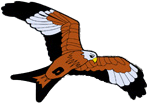Design Technology
Intent
The Design and technology scheme of work aims to inspire pupils to be innovative and creative thinkers who have an appreciation for the product design cycle through ideation, creation, and evaluation. We want the children at Stokenchurch Primary School to be aware of the real-life application of the knowledge and skills gained through an enriched curriculum and awareness of future career opportunities.
We want pupils to develop the confidence to take risks, through drafting design concepts, modelling, and testing and to be reflective learners who evaluate their work and the work of others. Thinking critically and making design amendments and changes where necessary according to the brief.
Through our scheme of work, we aim to build an awareness of the impact of design and technology on our lives and encourage pupils to become resourceful, enterprising citizens who will have the skills to contribute to future design advancements.
Our Design and technology scheme of work enables pupils to meet the end of key stage attainment targets in the National curriculum and the aims also align with those in the National curriculum.
EYFS (Reception) units provide opportunities for pupils to work towards the Development Matters statements and the Early Learning Goals.
Design and Technology at Stokenchurch Primary School follows the National curriculum in the design, make, evaluate format and develops technical competence and knowledge over time.
Our intent is that we enable our learners to be taught how to cook and apply the principles of nutrition and healthy eating. Learning how to cook is an essential life skill that enables pupils to feed themselves and others affordably and well, now and in later life.
Implementation
The Design and Technology National curriculum outlines the three main stages of the design process: design, make and evaluate. Each stage of the design process is underpinned by technical knowledge which encompasses the contextual, historical, and technical understanding required for each strand.
Cooking and nutrition is the current priority with a focus on specific principles, skills and techniques in food, including where food comes from, diet and seasonality.
The National curriculum organises the Design and Technology attainment targets under four subheadings: Design, Make, Evaluate, and Technical knowledge which we follow at Stokenchurch Primary School. We use the Kapow scheme of work as a basis supplemented with CPD to enhance the Teaching and Learning of DT and membership of the DT Association.
Through Kapow Primary’s Design and Technology scheme, pupils respond to design briefs and scenarios that require consideration of the needs of others to serve a purpose for a specific audience to solve a problem, developing their skills in the six key areas.
Our DT scheme is a spiral curriculum, with key areas revisited again and again with increasing complexity, allowing pupils to revisit and build on their previous learning and technical vocabulary acquisition.
Over time, our lessons will incorporate a range of teaching strategies from independent tasks, paired and group work, including practical hands-on, computer-based and inventive tasks. This variety means that lessons are engaging and appeal to those with a variety of learning styles.
Adaptive guidance is available for every lesson to ensure that lessons can be accessed by all pupils and opportunities to stretch pupils’ learning are available when required.
Knowledge organisers for each unit support pupils in building a foundation of factual knowledge by encouraging recall of key facts and vocabulary. Strong subject knowledge is vital for staff to be able to deliver a highly effective and robust Design and technology curriculum, enabling children to immerse themselves in design, make, and evaluate. Lessons are delivered at a high standard that ensure pupil progression.
Impact
Through the use of Kapow Primary’s scheme, our Design and Technology curriculum can be constantly monitored through both formative and summative assessment opportunities. Each lesson includes guidance to support teachers in assessing pupils against the learning objectives which reflect the National Curriculum.
To further support pupils engagement and understanding to support planning and practice, each unit has a unit quiz and knowledge catcher which can be used at the start and/ or end of the unit.
After the implementation of Kapow Primary Design and technology, pupils should leave Stokenchurch Primary school equipped with a range of skills to enable them to succeed in their secondary education, have an awareness of future career opportunities and be innovative and resourceful members of society.
The expected impact of following our Design and Technology scheme of work is that children will:
- Understand the functional and aesthetic properties of a range of materials and resources that can be used in the construction of products and their uses in everyday life.
- Understand how to use and combine tools to carry out different processes for shaping, decorating, and manufacturing products.
- Build and apply a repertoire of skills, knowledge and understanding to produce high quality, innovative outcomes, including models, prototypes, CAD, and products to fulfil the needs of users, clients, and scenarios.
- Understand and apply the principles of healthy eating, diets, and recipes, including key processes, food groups and cooking equipment.
- Have an appreciation for key individuals, inventors, inventions, and events in history and of today that impact our world and the future of technology through opportunities provided by the DT Association, partnership schools and the wider community.
- Recognise where our decisions can impact the wider world in terms of community, social and environmental issues.
- Self-evaluate and reflect on learning at different stages of the Design and Technology process and identify areas to improve.
- Meet the end of key stage expectations outlined in the National curriculum for Design and technology.
- Meet the end of key stage expectations outlined in the National curriculum for Computing.
